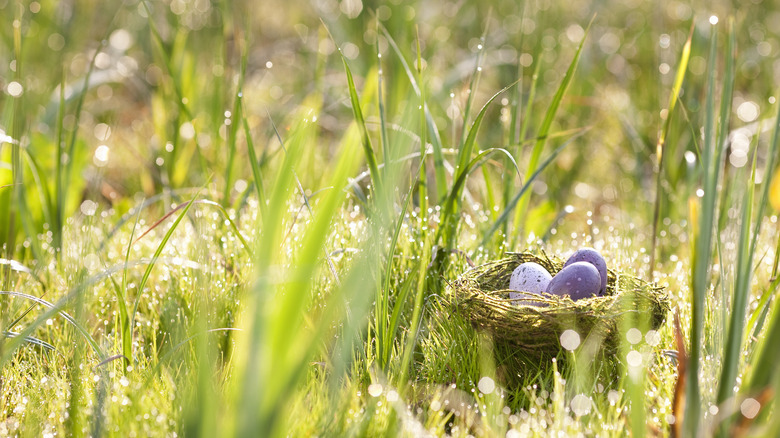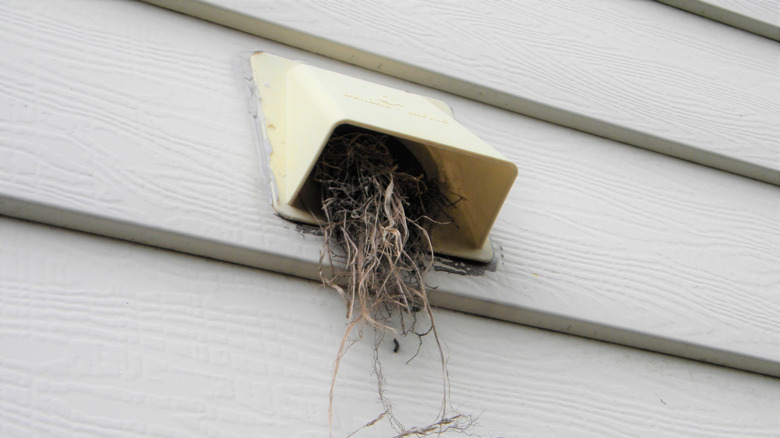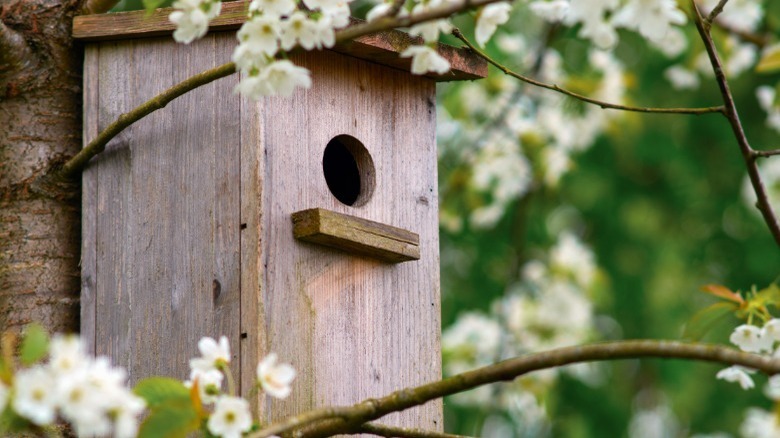How And When To Move The Bird Nest In Your Yard
Nothing can be as delightful as watching a bird build its nest, all of that thoughtful work culminating with the birth of hatchlings. Observing from a distance can be a beautiful experience, and many of us spend considerable effort trying to attract birds to our yards. There are times, however, when a nest is in an inconvenient — or even dangerous — location. So what should you do?
"First of all, be aware that many bird species have been in a downward spiral for the last 50 years in North America," says Brian Cunningham, director of outreach and nature education for Wild Birds Unlimited, Inc. "We have lost almost 3 billion breeding birds and they can use our help. Second, recognize there are protections for birds that have been in place for over a century, such as the Migratory Bird Treaty Act. This federal law, in conjunction with state and municipal laws and ordinances, prohibits the destruction or moving of active nests to help protect birds."
Make sure it's legal
Before you consider removing a nest, the first step is to check if the nest is active. Does it contain eggs? Are the parents flying in and out? If a nest has eggs or young, Brian Cunningham notes that it is illegal to move it. There are some rare occasions when a bird chooses to build a nest in a dangerous place. Think near an outdoor grill, in a patio umbrella or dryer vent. If this is the case, contact the U.S. Fish & Wildlife Service for advice.
"If it is still under construction and there are no eggs or young, you can dissuade the building of the nest," suggests Cunningham. "Birds often abandon a nesting attempt if you discourage them and they try elsewhere." If there are eggs or babies, practice a little patience and consider that there's an important difference between danger and inconvenience. "Most songbird nesting is relatively quick. They lay one egg per day and have three to six eggs on average," Cunningham describes. "The eggs are incubated in about two weeks, followed by about two weeks before fledglings leave the nest. Embrace how you are providing a place for them to raise the next generation."
Relocation remedies
If you've determined that you are legally able to move the nest, and it is absolutely necessary, you should always seek professional help if there are eggs inside. Believe it or not, it's not always apparent if a nest is active, especially if it is in a tree cavity or an opening in your home, such as a vent. Your best bet is to contact a wildlife rehabilitator in your area. These are also the experts to call if you ever encounter an injured bird. Anyone who moves the nest should wear latex gloves and a face mask, as bird droppings can harm humans. Relocate the nest, and if it is in an area like a gutter, umbrella or anywhere else on your home, deck or patio, be sure to disinfect the location with antibacterial spray. Finally, wash your hands with soap and water.
It's also a good idea to limit the ability of birds to build in the same space once you've removed the nest. That might mean blocking holes around your home with vent covers or mesh and keeping your patio umbrella closed when not in use. You might even add some friendly birdhouses and nesting material to encourage these flying home builders to settle in a more welcoming area of your yard.


